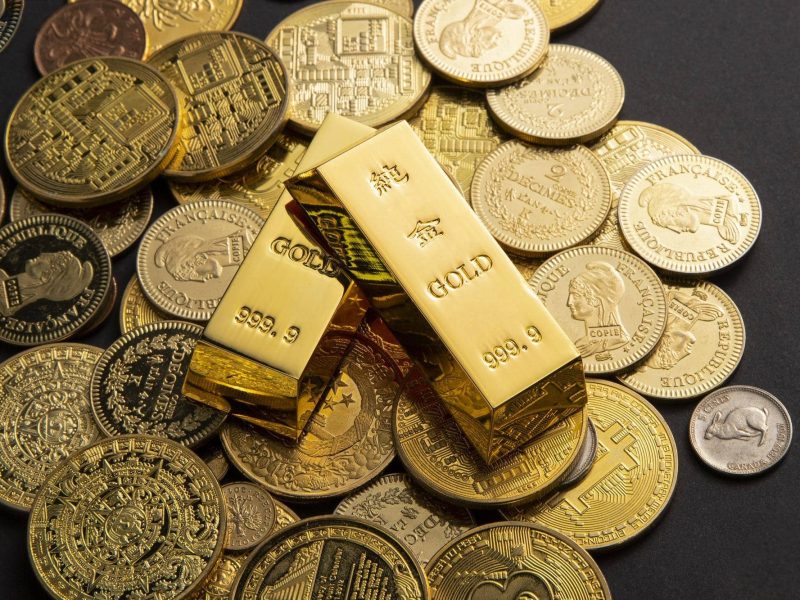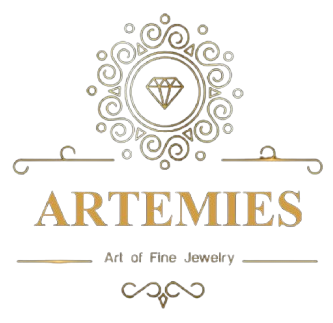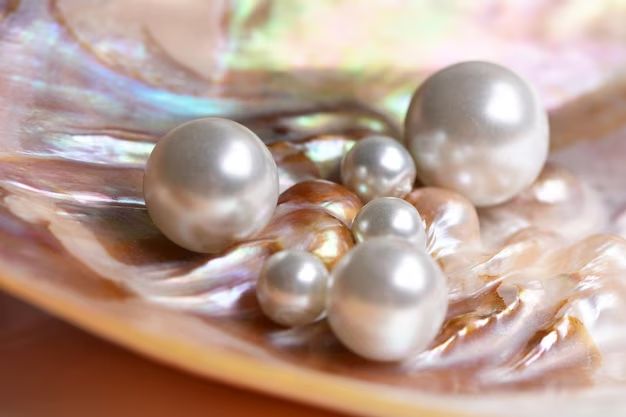
- Jewelry
Gold: A Comprehensive Guide to Its Properties, Investment Potential, and Sustainable Practices
Table of Contents
What is gold?
Gold is a chemical element with the symbol Au (from the Latin word aurum) and atomic number 79. It's a bright, slightly orange-yellow, dense, soft, malleable, and ductile metal. Known for its resistance to corrosion and tarnish, gold has been valued as a precious metal for millennia.
What qualities make gold an ideal metal for jewelry making?
- Malleability and ductility: Gold can be easily shaped and formed into intricate designs without breaking.
- Lustre and color: Gold's natural beauty and rich color enhance the appearance of gemstones and complement various styles.
- Durability: When alloyed correctly, gold can withstand everyday wear and tear, ensuring the longevity of jewelry pieces.
- Hypoallergenic properties: Gold is generally well-tolerated by most people, making it a safe choice for those with sensitive skin.
- Value and prestige: Gold has long been associated with wealth, status, and luxury, enhancing the desirability of jewelry.
- appreciation trend :Despite experiencing fluctuations in value, gold has historically shown a long-term appreciation trend.
For those seeking a combination of beauty, durability, luxury, and potential long-term value, gold jewelry offers a compelling choice. Its lightweight nature, coupled with its timeless appeal and historical status as a store of value, makes it a desirable option for many.
What are the different types of gold?
Gold can be categorized based on two primary factors:
Color
- Yellow Gold: The natural color of gold.
- White Gold: An alloy of gold with other metals like palladium, silver, or nickel.
- Rose Gold: An alloy of gold with copper.
Karat
- Karat indicates the purity of gold.
- 24K: Pure gold
- 22K, 18K, 14K, 10K: Lower purity, with higher amounts of other metals for durability.
These categories help consumers understand the different types of gold available and make informed choices based on their preferences and budget.
It's crucial to emphasize the difference between karat and carat to avoid confusion.
Karat
refers to the purity of gold in an alloy. It measures the proportion of pure gold out of 24 parts. For example, 18K gold contains 18 parts pure gold and 6 parts of other metals.
Carat is a unit of weight used to measure gemstones, such as diamonds. It indicates the size of the gemstone. 1 gram is equal to 5 carats.
Example:
- 2 grams = 10 carats
- 5 grams = 25 carats
To summarize:
- Karat is for gold purity.
- Carat is for gemstone weight.
To further clarify, you could use examples:
- A ring with a 0.50 carat diamond set in 18 karat gold.
- The karatage of gold determines its color and durability, while the carat weight of a diamond influences its size and price.
-
What is the process involved in transforming raw gold into various gold products, such as jewelry?
Pure gold is naturally yellow.
Its characteristic color comes from its atomic structure and how it interacts with light.
The process of manufacturing gold jewelry involves several steps:
- Mining: Gold is extracted from the earth through various mining methods.
- Refining: The extracted gold ore is refined to separate pure gold from other minerals and impurities.
- Alloying: To increase durability and hardness, pure gold is mixed with other metals like copper and silver. The exact proportions of these alloys determine the karatage of the gold. For example 14K Rose Gold typically contains 58.3% pure gold and a significant amount of copper, which gives it the pink or reddish hue. (14 out of 24 or 14/24) or 18K Rose Gold similar to 14K rose gold but with a higher gold content, resulting in a softer pink color (18 out of 24 or 18/24)
- Melting: The gold alloy is melted to create a liquid form.
- Casting: The molten gold is poured into molds to create the desired shape of the jewelry piece.
- Finishing: The cast piece undergoes processes like polishing, shaping, and setting gemstones to achieve the final product.
Rose gold is created by alloying pure gold with copper. The copper imparts the characteristic pinkish hue. The higher the copper content, the deeper the rose color.
White gold is produced by combining pure gold with white metals such as palladium, nickel, or silver.However, the resulting alloy often has a yellowish tint. To achieve a bright white color, white gold is usually rhodium-plated.
It's important to note that while pure gold is naturally yellow, the specific shade of yellow in a piece of jewelry can vary slightly depending on the exact alloy used.
How is gold measured?
Gold is measured in two primary ways:
- Carat: This measures the purity of gold. Pure gold is 24 carats. Lower carat numbers indicate a higher proportion of other metals in the alloy. For example, 18-carat gold is 75% pure gold.
- Weight: Gold is typically weighed in troy ounces. This is a unit of measurement specifically used for precious metals like gold and silver.
Note that here are two primary types of ounces: the troy ounce and the avoirdupois ounce.
- The troy ounce is primarily used for measuring precious metals like gold, silver, and platinum. It's slightly heavier than a standard ounce, weighing in at 31.1035 grams.
- The avoirdupois ounce is the standard unit of weight for most everyday items. Used for everyday measurements, equal to 28.35 grams.
This means a troy ounce is approximately 10% heavier than a standard ounce.
In essence, when you hear about the price of gold per ounce, it's referring to a troy ounce.
What is the role of gold in jewelry making?
Gold's malleability, durability, and resistance to tarnish make it an ideal metal for jewelry. Its beautiful luster and color also contribute to its popularity.
Popular gold jewelry styles
Gold jewelry styles vary widely based on trends and personal preferences. Some popular styles include:
- Classic: Timeless designs like solitaire rings and delicate chains.
- Contemporary: Modern and edgy pieces with unique shapes and textures.
- Vintage: Retro-inspired jewelry with antique or antique-inspired elements.
Artemies Gems and Jewelry offers a diverse collection featuring both classic and contemporary styles.
Gold and gemstones: Gold complements a wide range of gemstones. Popular combinations include:
- Diamonds and gold: A classic and luxurious pairing.
- Sapphires and gold: A striking combination that offers various color options.
- Rubies and gold: A passionate and fiery combination.
Why Do People Invest in Gold?
While gold jewelry can appreciate in value, it's primarily considered a wearable asset. Factors like design, craftsmanship, and gemstones also influence its value. People invest in gold for several reasons:
Hedge against inflation:
Gold has historically been seen as a hedge against inflation as its value tends to rise when the purchasing power of currencies declines.
Safe-haven asset: In times of economic uncertainty or financial crisis, gold is often considered a safe-haven asset, providing stability to investment portfolios.
Diversification: Gold can help diversify an investment portfolio, reducing overall risk as it often moves independently of other asset classes.
Store of value: Gold has been viewed as a store of value for centuries, maintaining its purchasing power over long periods.
Tangible asset: Unlike stocks or bonds, gold is a physical asset that can be held and owned directly.
What are the environmental and social impacts of gold mining and production?
Ethical gold sourcing: The demand for ethically sourced gold has increased. Look for certifications like Fairmined or Responsible Jewellery Council (RJC) to ensure gold comes from responsible mining practices.
Recycled gold: Recycling gold reduces the environmental impact of mining. Many jewelers offer recycled gold options.
Related Posts
Fall in Love with Jewelry, Stories, and Secrets
Join Artemies Magazine for insider jewelry tips, trend updates, and subscriber-only discounts.



